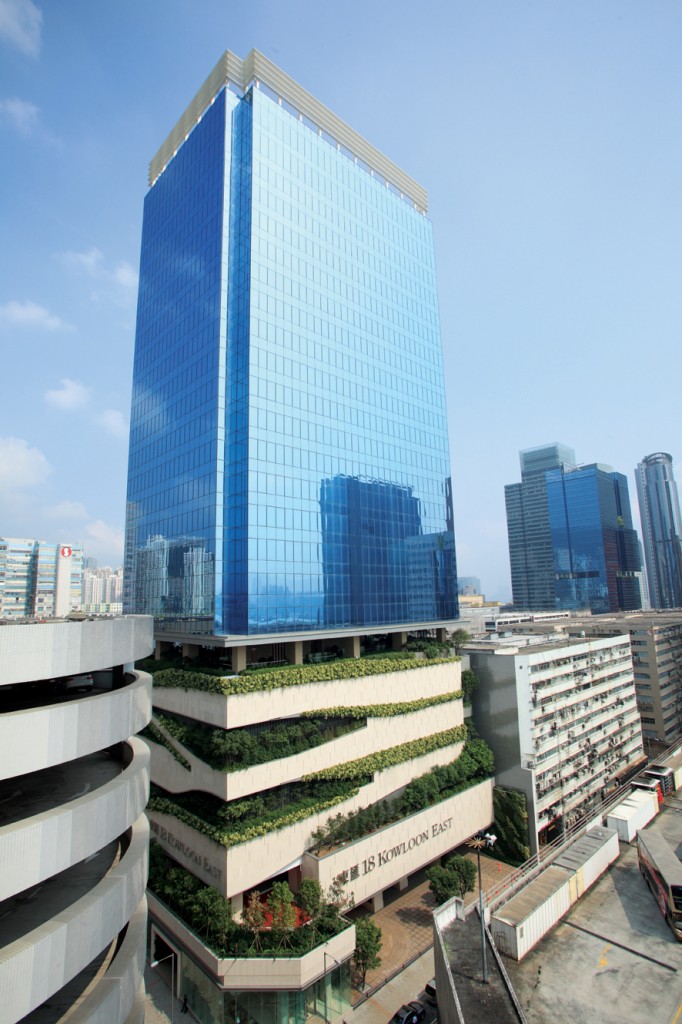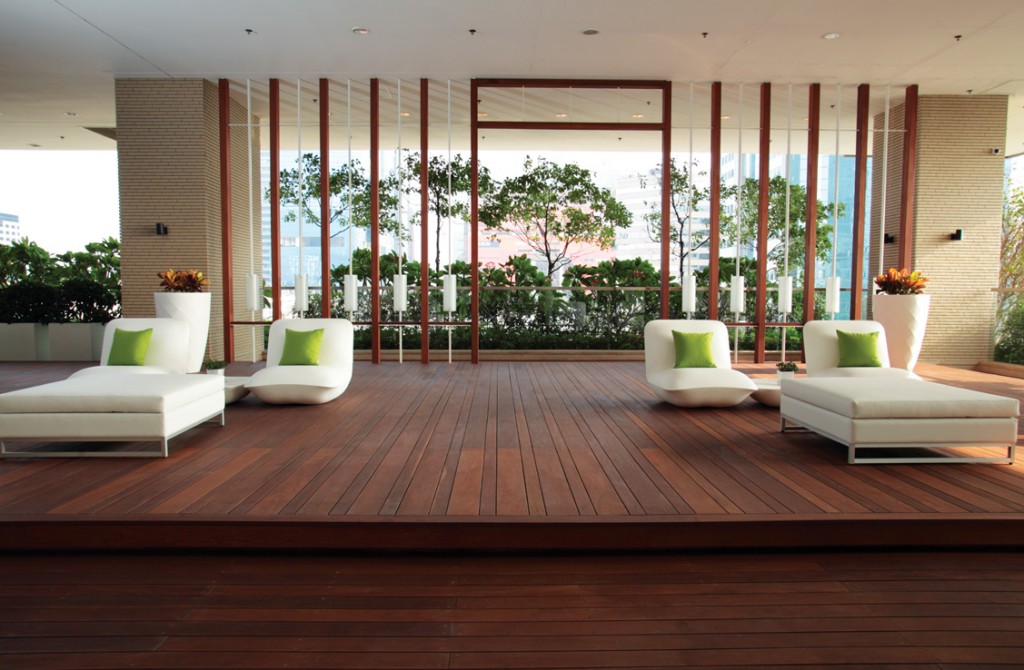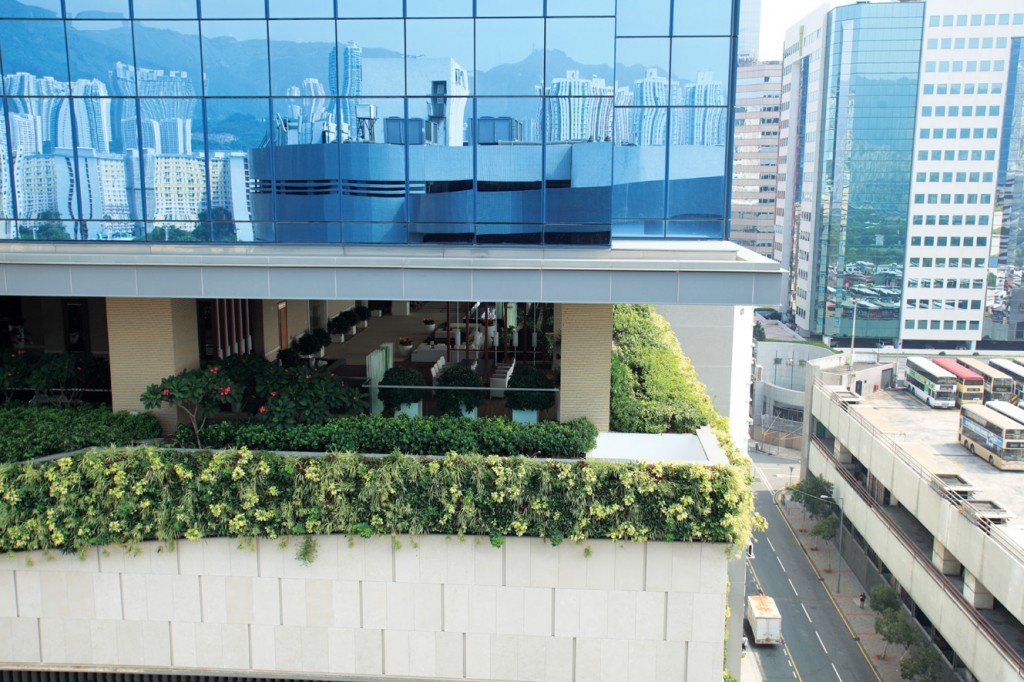Aedas’ commitment to address environmental, social and economic challenges through design excellence is central to the practice’s ethos. The company stresses that in the age of climate change and resource scarcity minimizing the environmental impact of projects is a shared imperative for both clients and design teams.
 “At Aedas we set sustainable design targets for every project and offer solutions through innovative research and practice that deliver both business advantages for our clients and environmental benefits to our built environment. Planting is one of the environmental initiatives to match our client’s aspirations with architectural designs that reduce environmental impact, maximize social benefits, and benefit the urban environment,” states Cary Lau, Director, Aedas.
“At Aedas we set sustainable design targets for every project and offer solutions through innovative research and practice that deliver both business advantages for our clients and environmental benefits to our built environment. Planting is one of the environmental initiatives to match our client’s aspirations with architectural designs that reduce environmental impact, maximize social benefits, and benefit the urban environment,” states Cary Lau, Director, Aedas.
“We expect to see more green buildings in the near future. Then, we can transform Hong Kong into a Garden City or City in a Garden! People are more alert to sustainability in recent years. 18 Kowloon East is one of the latest buildings that takes sustainability as a design consideration.”
Engaged as project architect in mid-2007, Aedas had pushed the idea of a green design, a design with extensive landscaping from the outset of the project. As the design developed, it became more and more apparent that given the context and parameters of the site, vertical greening seemed to fit naturally with the design.
As the building is situated within an old industrial area, the neighbourhood is dominated by concrete blocks. Instead of providing another office tower wrapped in a cool glazed facade, Aedas’ design investigates the possibility of providing an environmentally sustainable alternative within such an industrial area. By doing so, it was hoped that the design could contribute towards a greening effect to the neighbourhood. It also improves the environment for building users as well as the surrounding pedestrians.
At 18 Kowloon East, the green wall derived from a government regulation that limits the exemption of GFA of planter boxes to a dimension of 500mm width. In order to create a more extensive greening effect, Aedas’ design proposed to stack the greenery one on top of the other, resulting in a vertical greening design that challenged the notion of restrictions imposed by government regulations.
In fact, green walls form only a small part of the project and other elements also help in creating the overall effect at 18 Kowloon East. Planters, for instance, also form a significant portion of the greenery elements on the facade of 18 Kowloon East. The planters also help improving the microclimate as well as reducing the harshness of the office block. Aside from the visually greening effects of the design to the neighbourhood, the planting also filters pollutants in the air and improves the air quality of the car park.
Although vertical greening is one of the most prominent features at 18 Kowloon East, it is not the only sustainable design element of the building. Along with the design of the car park, the tower brings sustainable design not only to the building itself, but to the neighbourhood of Kowloon Bay as well.
 “Vertical greening does not represent the sole means through which sustainability can be integrated into the design. Different factors should be considered in response to different site constraints for different projects. In this project, the industrial context and the tight lot conditions make vertical greening a logical choice. Other means of sustainable design maybe more appropriate for other projects,” states Lau.
“Vertical greening does not represent the sole means through which sustainability can be integrated into the design. Different factors should be considered in response to different site constraints for different projects. In this project, the industrial context and the tight lot conditions make vertical greening a logical choice. Other means of sustainable design maybe more appropriate for other projects,” states Lau.
Is the government playing a crucial role in the greening of Hong Kong or are most initiatives to date being lead by developers such as Sino?
According to Lau it appears as though there are initiatives from both sides (government and developers) to developing green buildings in Hong Kong. On the one hand, the government is encouraging the construction of sustainable buildings while developers are also realizing the potential of green elements within their developments. However, complicated procedures and tedious administration processes hamper the building design with green elements that are outside the list of ‘green features’ stipulated in the relevant guidelines, he says.
“In promoting the concept of green and sustainable building design, the government, while taking a proactive approach to encouraging their designs through incentives in land use, could perhaps consider making the process of application simpler. Often during the design process, architects would like to promote designs which incorporate sustainability elements. Although these are generally well received by the developers, the lengthy approval process usually results in the abandonment of these good ideas. If the process could be streamlined and made easier, it appears that developers would be much more likely to carry out these designs which would be beneficial to the community and public.”
 In recent years, the public is more alert to sustainability. This has also been reflected in building design. Vertical greening represents a means though which this can be achieved. As the vertical greening system is similar to any other cladding materials, the impact on the structure is minimal and its structural design is similar to other conventional fixing mechanisms of cladding. Although no quantitative assessment has been conducted, the actual design of 18 Kowloon East greatly enhances the visual blandness of Kowloon Bay by providing an attraction of green against the backdrop of concrete blocks.
In recent years, the public is more alert to sustainability. This has also been reflected in building design. Vertical greening represents a means though which this can be achieved. As the vertical greening system is similar to any other cladding materials, the impact on the structure is minimal and its structural design is similar to other conventional fixing mechanisms of cladding. Although no quantitative assessment has been conducted, the actual design of 18 Kowloon East greatly enhances the visual blandness of Kowloon Bay by providing an attraction of green against the backdrop of concrete blocks.
“It is difficult to say how many other projects in Hong Kong may incorporate extensive greening into their design because its incorporation relies greatly on the site conditions and context of usage. Sustainable development relies on many factors and not just green walls, however, it is quite certain that many upcoming projects do take sustainability into account,” Lau concludes.












